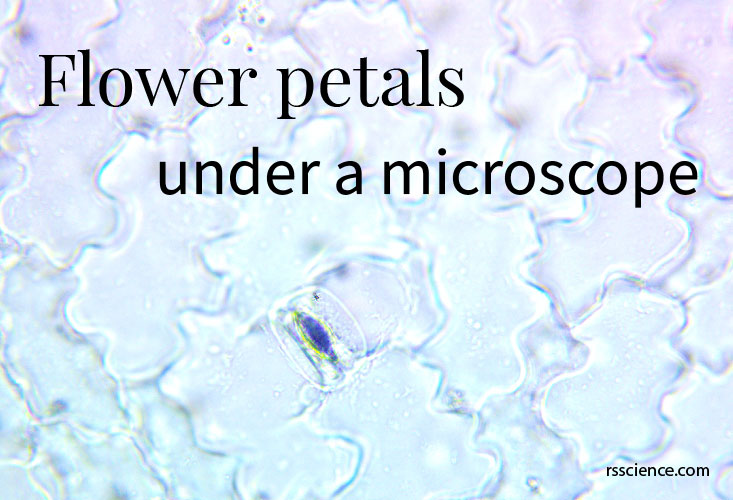This article covers
What is a flower petal and its function?
Petals are modified leaves that surround the reproductive parts of flowers. They are often brightly colored or unusually shaped to attract pollinators. Together, all of the petals of a flower are called a corolla.
Take lily as an example. Lilies have a wide variety of corolla in different shapes: including trumpets, funnels, cups, bells, bowls, and flat shapes. Some lilies have reflexed petals, meaning that each petal curves backward. Lily petals often have lines and dots on them. These markings actually serve as a map for insects, leading them to the nectar.
Sepals are the leafy parts that are underneath the petals. They can be green, or they can match the color of the petals. The sepals are what initially encase the immature flower bud and protect it. The flower sits on a receptacle and is attached to the stem via a piece of the pedicel.
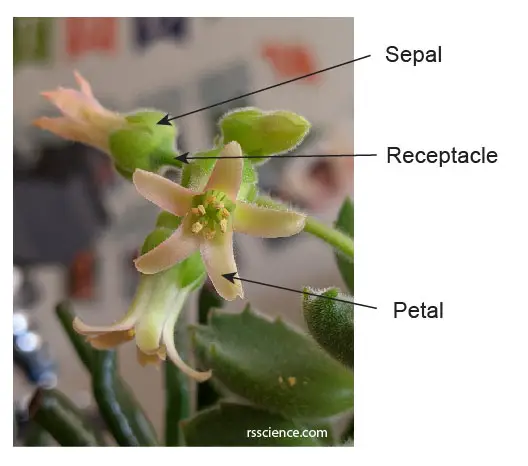
[In this figure] Diagram showing the parts of a flower, including petals, sepals, and a receptacle.
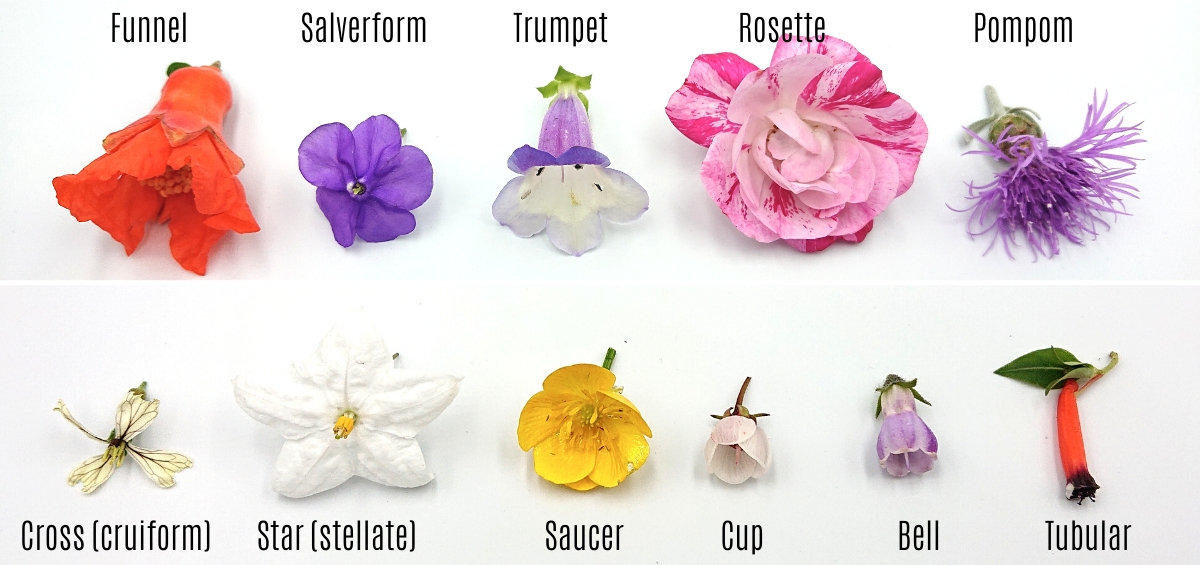
[In this figure] Illustration of different flower shapes.
Photo source: The seed collection.
Parts of a flower
Petals, male parts, and female parts are three common parts of all flowers.
The stamen is the male part of a flower and consists of two parts: the anther and the filament. The filament is the stem-like part that holds up the anther and anchors it to the center of the flower. The anther is the rounded section at the top of each filament. The anther holds the pollen of the flower. If you tap the anther or rub it against your finger, you will be able to see some pollen come off. Different flowers have different numbers of anthers and stamens – some grasses may have just one, roses have dozens, and lilies always have six.
Female parts are collectively called the pistil. The pistil is the large central part of the flower. At the top of the pistil is the stigma. The stigma is rounded and is sticky to the touch. It is sticky so that it can catch pollen. The stigma is attached to the ovary with a stem-like portion called the style. The style carries the pollen to the ovary. The ovary is the big round portion at the bottom of the pistil, usually fully protected by petals. Using a knife, slice the ovary in half so you can see a cross-section (like the image below). It contains the eggs which ultimately develop into the seeds of the plant.

[In this figure] A illustration of common flower parts: petals, male parts, and female parts.
Male parts are stamen, consisting of anther and filament. Female parts are collectively called the pistil, consisting of stigma, style, ovule, and ovary.
Photo credit: modified from www.freepik.com
Flower petals under a light microscope
The material you need
- Blank microscope slides and coverslips
- Forceps
- A variety of flower petals
- Droppers
- Compound microscope
- Water
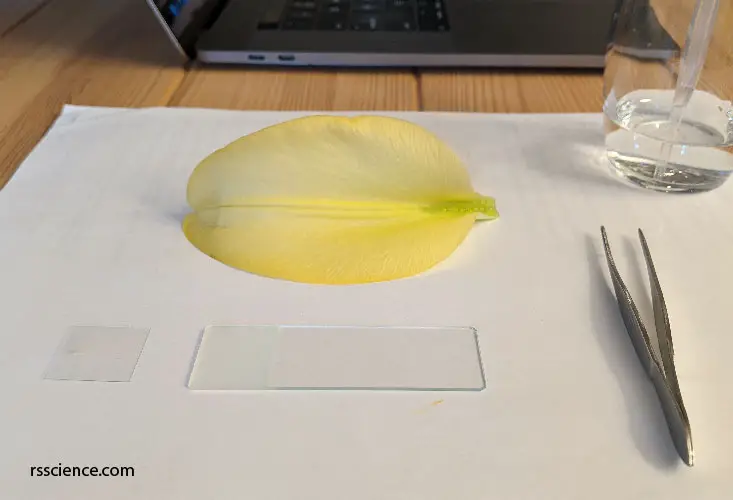
Step 1: Tear a flower petal to get a very thin layer of a flower petal. The thinner, the better.

Step 2: Use a dropper to take a small amount of water and place it on a slide. Use forceps to pick a thin layer of a flower petal, place it on the center of the water drop.
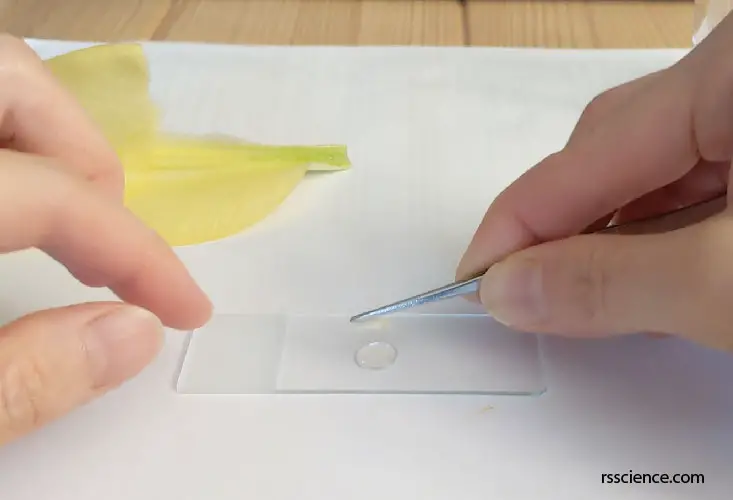
Step 3: Put coverslip on top. Use the forceps to lower the coverslip slowly with an angle. Allow one side of the liquid droplet touches the coverslip first. This permits air to escape from the other side.
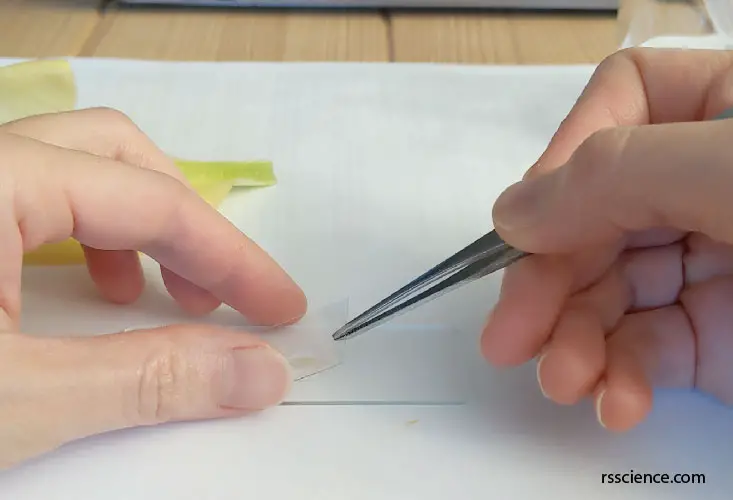
What will you see?
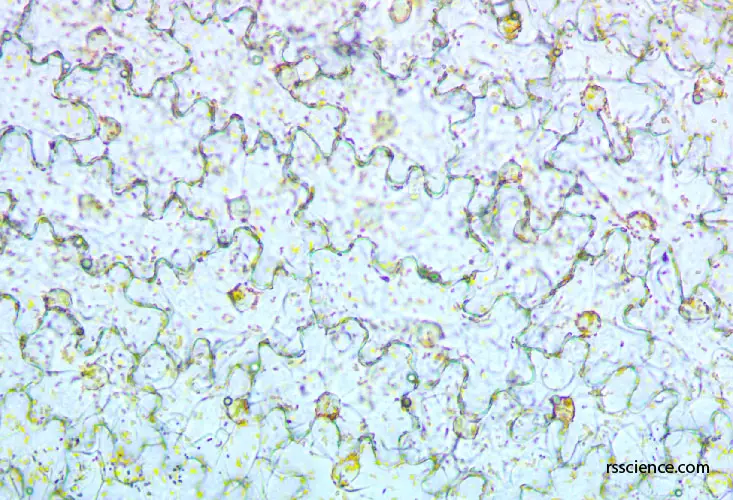
[In this figure] The flower petal of the lily under a microscope.
The irregular-shaped cells are epidermal cells. You can also see yellowish pigment granules, reflecting the appearance of a yellow petal.
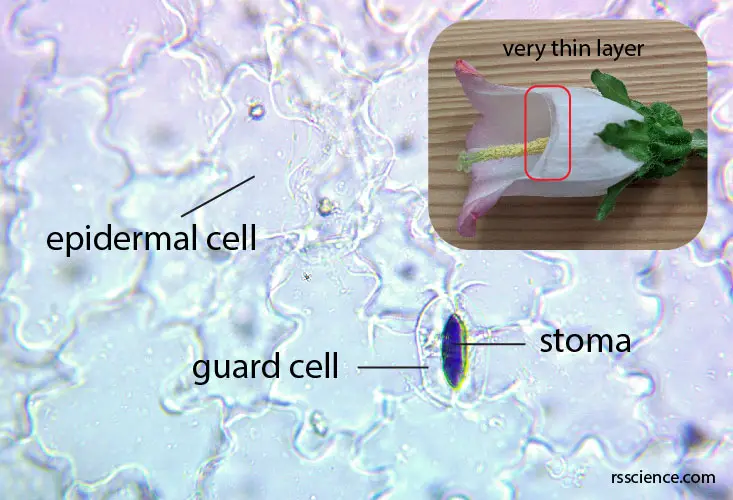
[In this figure] The flower petal of canterbury bell under a microscope.
The irregular-shaped cells are epidermal cells. Because petals are modified leaves; therefore, you can see guard cells and stoma occasionally. They are an important feature of the leaves for photosynthesis.

